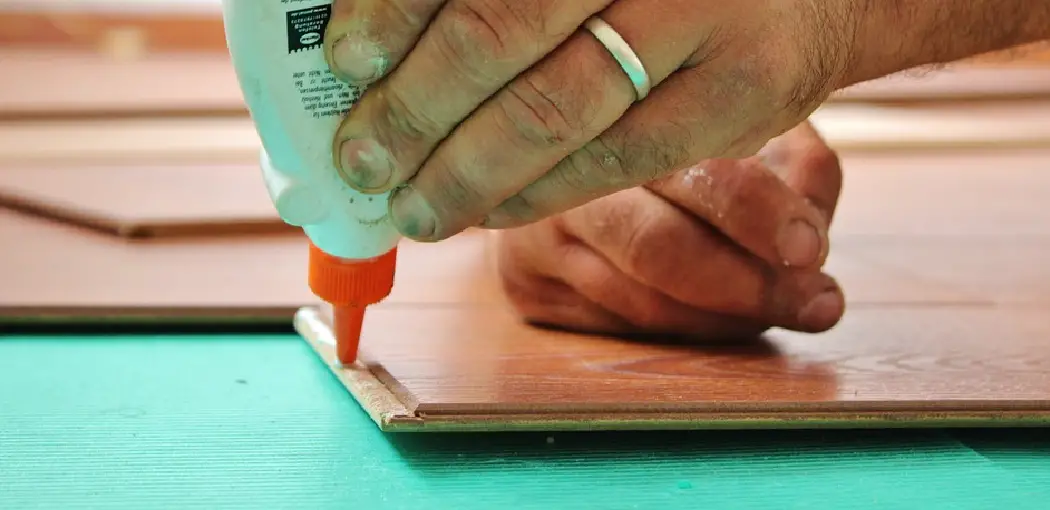Are you looking for a way to attach granite to wood? Look no further because, with the right supplies and technique! This blog post will show you how to glue granite to wood using gentle heat and a few simple steps. Read on for tips and advice on how to get the job done right. You’ll soon have a beautiful granite and wood combination that will be sure to impress. The best part? It’s an easy project that can be completed in just a few hours.
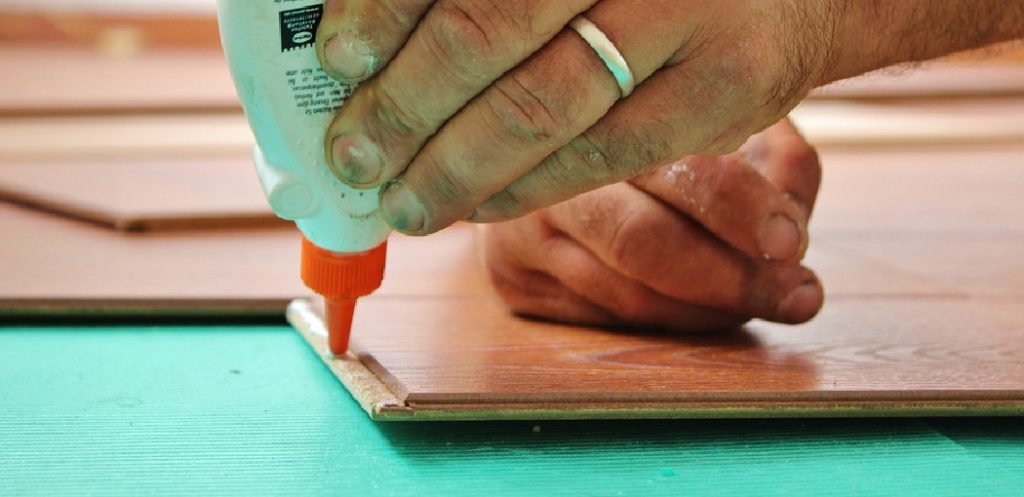
Why Should You Glue Granite to Wood?
Granite is a beautiful, durable material that can add value to your home. But did you know that you can glue granite to wood? This can be a great way to add a unique touch to your décor or create a custom furniture piece.
When doing this, there are a few things to keep in mind, but it’s a fairly simple process. So here’s why you should give it a try!
Gluing granite into wood can provide several benefits. First of all, it’s a great way to create a one-of-a-kind piece. Whether you’re adding granite to an existing piece of furniture or creating something completely new, the options are endless. You can also use this technique to add a personal touch to your décor.
Another great reason to glue granite to wood is durability. Granite is an incredibly tough material, so when it’s glued to wood, it creates a piece that will last for many years. This is especially beneficial if you have kids or pets who may be rough on furniture.
Required Materials
Granite:
You will need a piece of granite large enough to cover your desired surface area. You can purchase granite slabs at most home improvement stores, or you can repurpose an old countertop.
Wood:
The type of wood you use will depend on your project. Whether it’s a table, shelf, or other furniture piece, make sure the wood is sturdy enough to support the weight of the granite.
Epoxy Adhesive:
Epoxy adhesive is a strong, waterproof glue that works well for attaching granite to wood. Make sure to purchase an epoxy specifically designed for stone and wood materials.
Paint Brush:
You will need a paintbrush to apply the epoxy adhesive onto both the granite and wood surfaces. A small brush will work best for precision and control.
Heat Gun:
To get the perfect bond between the granite and wood, gentle heat is required. A heat gun will provide the right amount of heat to activate the adhesive and ensure a strong bond.
Clamps:
Clamps are necessary to hold the two surfaces together while they bond. Make sure to use clamps that are large enough to cover the entire surface area and have enough pressure to hold the granite and wood firmly together.
Caulking Gun:
A caulking gun will be used to apply the epoxy adhesive onto the wood surface. This will ensure an even and consistent application.
Putty Knife:
A putty knife will come in handy for removing any excess adhesive and smoothing out the joint between the granite and wood. It can also be used to remove any air bubbles that may have formed during the bonding process.
Masking Tape:
Masking tape is optional but can be helpful in holding the granite and wood together while the adhesive sets. It can also prevent any excess adhesive from dripping onto other surfaces.
How to Glue Granite to Wood Step-by-Step Guide
Step 1: Inspect and Measure the Current Table
You will first need to take a look at the table to that you want to attach the granite too.
Inspect it for any signs of damage and make sure that there are no loose pieces of wood. Take measurements of the table to know how large your cut of granite will need to be. You can use a tape measure for this step.

Step 2: Sand/scuff up The Perimeter of The Top
Once you have determined where you want the granite placed on your wood countertop, sand or scuff up the perimeter of the top; this will help create a better grip for the adhesive to hold onto. You can use sandpaper or a sanding block for this step.
It’s important to note that sanding or scuffing up the wood should only be done on the perimeter where the granite will be attached. This will help ensure that the adhesive only sticks to the areas where it’s needed.
Step 3: Choose the Right Adhesive
The type of adhesive you use is important when gluing granite to wood. You need to make sure that you choose an adhesive that is strong enough to hold the granite in place and that will not damage the wood.
You can find epoxy adhesives specifically designed for stone and wood materials at most home improvement stores. Make sure to read the instructions and choose an adhesive that is suitable for your project.
Step 4: Cut the Granite to Size
If you’re using a pre-cut piece of granite, you’ll need to cut it to fit your countertop or other surface. To do this, use a wet saw with a diamond blade designed for cutting granite. You can also use a hand-held power saw with a carbide-tipped blade, but it’s more difficult to control.
It’s important to measure twice and cut once to ensure the granite fits perfectly on top of your wood surface.
Step 4: Apply the Adhesive
Now, it is time to apply the adhesive to the wood. You will need to put a generous amount of adhesive on the surface of the wood. Ensure that you cover the entire area where the granite will be placed. Once the adhesive is in place, you can carefully place the granite on top of it. Ensure that the granite is level and that there are no air bubbles between the wood and the granite.
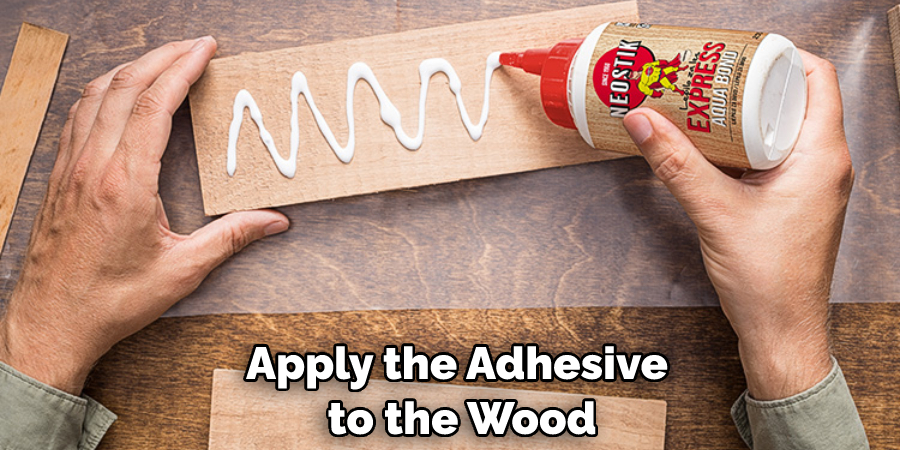
The adhesive will need to be set for a few minutes before moving on to the next step.
Step 5: Press Firmly
After applying an even layer of glue to both the wood and granite, it’s time to press them firmly together. Use your hands to apply pressure evenly across the surface area where the two materials are joined. If you have any clamps, you can also use them to help hold the bone in place while it dries. Just make sure that the clamps aren’t too tight, as this could cause the glue to ooze out from between the wood and granite.
You can also use masking tape to help hold the two surfaces together while the adhesive sets.
Step 6: Let the Adhesive Dry
Let the adhesive dry for at least four hours before you continue working. If you’re in a hurry, you can use a hairdryer to speed up the process. Once the adhesive is dry, it’s time to move on to the next step.
But if you want to make a strong bond, it’s best to allow the adhesive to dry overnight. It’s also a good idea to avoid placing any heavy objects on the table for at least 24 hours.
Step 7: Attach the Granite Countertop
With the help of an assistant, lay the granite countertop upside down on a clean work surface. Apply a generous bead of construction adhesive to the back of the granite, where it will make contact with the wood substrate. Place the countertop on the cabinets and press it firmly into place. Wipe away any excess adhesive that squeezes out along the seams.
The construction adhesive will need to dry for about 24 hours before you can use your new granite countertop.
Step 8: Secure the Countertop
Drill pilot holes through the granite countertop and into the wood substrate at intervals around the perimeter. Insert 3/8-inch diameter by 3-inch long concrete screws into the holes and tighten them securely. Be careful not to overtighten the screws, which could crack the granite.
It’s important to note that the weight of the granite will also help secure it in place, so you don’t need to rely solely on screws.
Step 9: Caulk the Seams
Use a caulking gun to apply silicone caulk in a continuous bead along the seams where the countertop meets the backsplash and where the countertop meets the cabinets. Work the caulk into the seam with your finger, then smooth it off with a damp rag. Allow the caulk to cure for 24 hours before using the countertop.
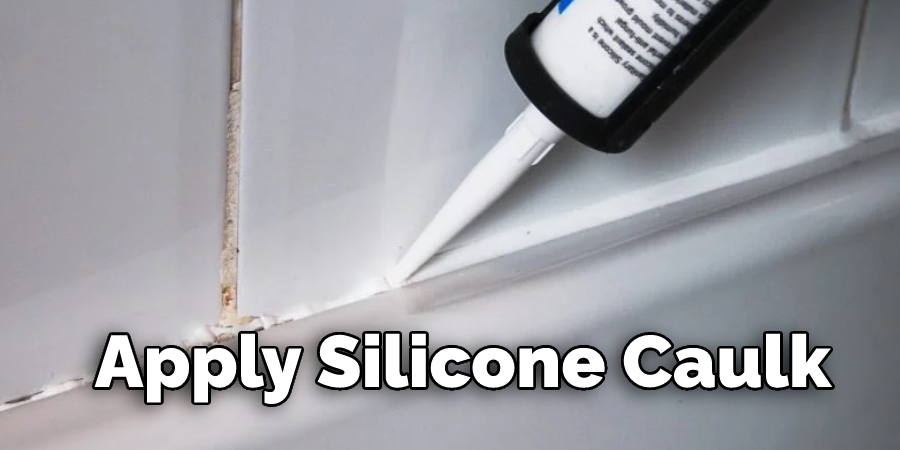
Although it may seem like a small step, caulking the seams will help prevent any water or debris from getting in between the wood and granite.
Step 10: Final Fit Check
Check the fit of your granite to make sure it’s snug against the wood. If it isn’t, loosen the clamps and readjust the stone. Leave the clamps in place once you’re happy with how it looks until the glue has dried completely.
Depending on the adhesive you used, this could take anywhere from a few hours to a full day. Once the adhesive is dry, your new countertop is ready to use!
Now that you know how to glue granite to wood, you can do the job yourself. Just make sure that you follow the steps carefully and allow enough time for the adhesive to dry completely. You’ll have a beautiful new countertop in no time!
You Can Check It Out To Cut Epoxy Resin
Do You Need to Use Professionals?
It is possible to complete this project on your own, but it’s essential to have the right tools and knowledge. If you’re not confident in your ability to cut and install the granite correctly, it may be best to hire a professional for this job. They will have all the necessary equipment and expertise to ensure that your countertop turns out perfectly. You can also ask them for advice on the best adhesive to use for your specific project.
Although it may cost more upfront, hiring a professional can save you time and potential headaches in the long run. Plus, they will be able to provide a warranty on their work for added peace of mind.
You Can Check It Out To Cut a Notch in Wood by Hand
How Much Could It Cost?
The cost of gluing granite to wood can vary depending on the size and type of project. If you already have all the necessary tools, it may only cost the price of the adhesive and any additional materials such as masking tape or putty knife. However, if you need to purchase tools like a wet saw or hire a professional, it could range from hundreds to thousands of dollars. Before starting the project, make sure to budget accordingly and research the costs of all necessary materials and tools.
Some Consideration Things
Before you decide to glue granite to wood, there are a few things you should take into consideration. The first is the weight of granite. Granite is very dense and can be quite heavy. This means that the wood you use to support it needs to be strong enough to hold the weight of the granite. You also need to make sure that the wood is smooth so that the granite will not catch on anything and break.
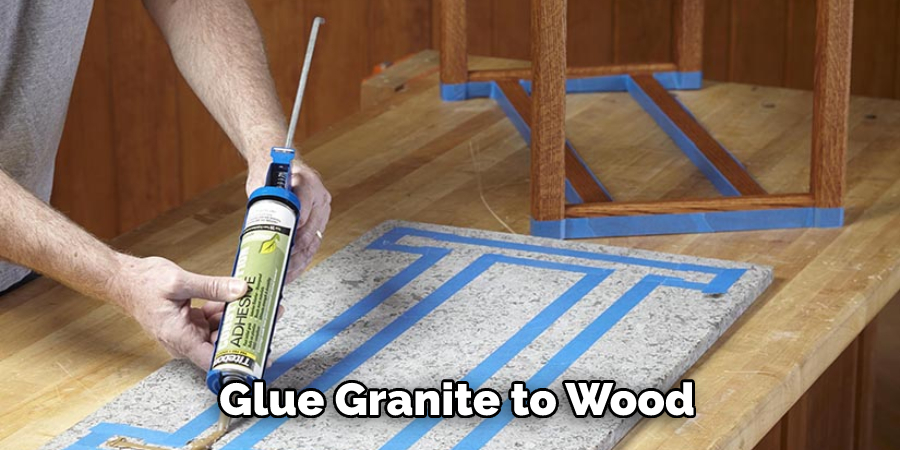
Another thing to consider is how well the granite will adhere to the wood. Granite is a very hard material, so it does not always adhere well to other materials. This means that you need to use a strong adhesive designed to bond granite to other materials.
How To Pick The Best Backsplash
When it comes to kitchen design, the backsplash is often one of the last things to be considered. However, this small area can have a big impact on the overall look and feel of the room. With so many different materials, colors, and patterns to choose from, it can be overwhelming to select the perfect backsplash.
However, there are a few key factors that can help to make the decision easier. First, consider what type of material will best suit your kitchen’s needs. If you are looking for a backsplash that is easy to clean and maintain, tile or glass may be the best option. If you want a backsplash that makes a statement, consider using stone or ceramic.
Next, think about the overall aesthetic you are trying to create in your kitchen. If you are going for a more traditional look, stick with neutral colors and simple patterns. If you want a more modern or unique backsplash, try using bolder colors or interesting textures.
Finally, make sure to consider the size of your kitchen when selecting a backsplash. If you have a small kitchen, a busy pattern or large format tile may not be the best option. Conversely, if you have a large kitchen, a small mosaic tile might get lost in the space. Keep reading for more information about how to glue granite to wood.
You Can Check It Out To Use Gorilla Wood Glue
Frequently Asked Question
What Is the Best Adhesive for Granite?
There is no one-size-fits-all answer to this question, as the best adhesive for granite will vary depending on the specific type of granite and wood in question.
However, some general tips on gluing granite to wood include using a strong epoxy adhesive or a construction adhesive like Liquid Nails. Make sure to read the labels on the adhesive to ensure it will work with the specific materials you are using.
Does Gorilla Glue Work on Granite?
The answer to this question is yes; Gorilla Glue works on granite. However, it is always best to test the adhesive on a small, inconspicuous area before completing the entire project.
Can You Use Liquid Nail on Granite?
The quick answer is “no.” You should never use an adhesive on granite. It’s a natural stone that doesn’t require any additional securing. However, if you’re looking to attach granite to wood, you can use a construction adhesive or epoxy specifically designed.
What Kind of Epoxy Do You Use on Granite
There are a few different types of epoxy that can be used on granite:
– Epoxy resin
– Polyester resin
– Vinyl ester resin
All three of these resins have different properties, so choosing the right one for the job is important. Epoxy resin is the most commonly used resin for gluing granite to wood. It is strong and durable, and it will create a waterproof bond. Polyester resin is not as strong as epoxy resin, but it is less expensive. Finally, vinyl ester resin is the strongest resin type, but it is also the most expensive.
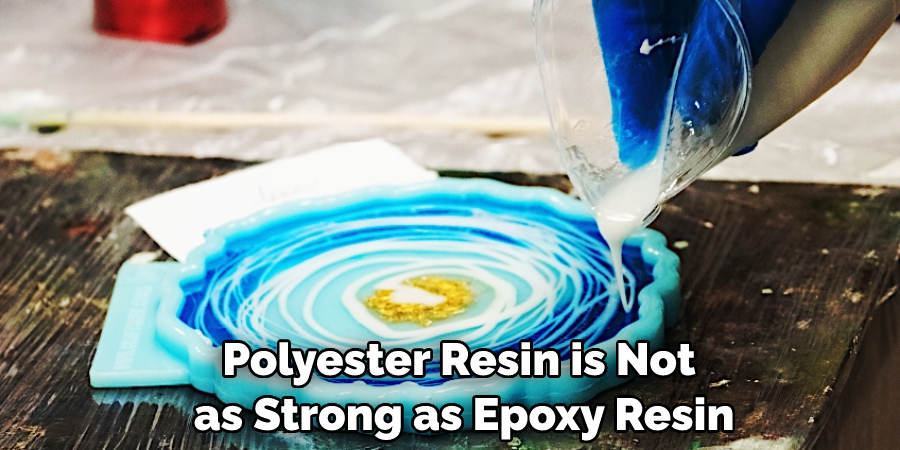
Conclusion
We’ve got just the thing if you’re looking for a strong adhesive to glue granite to wood. Our epoxy is perfect for this application and will provide a lasting bond. Contact us today to learn more about our products and how we can help with your next project! Thanks for reading our post about how to glue granite to wood.
You May read also How to Fix a Warped Cutting Board

